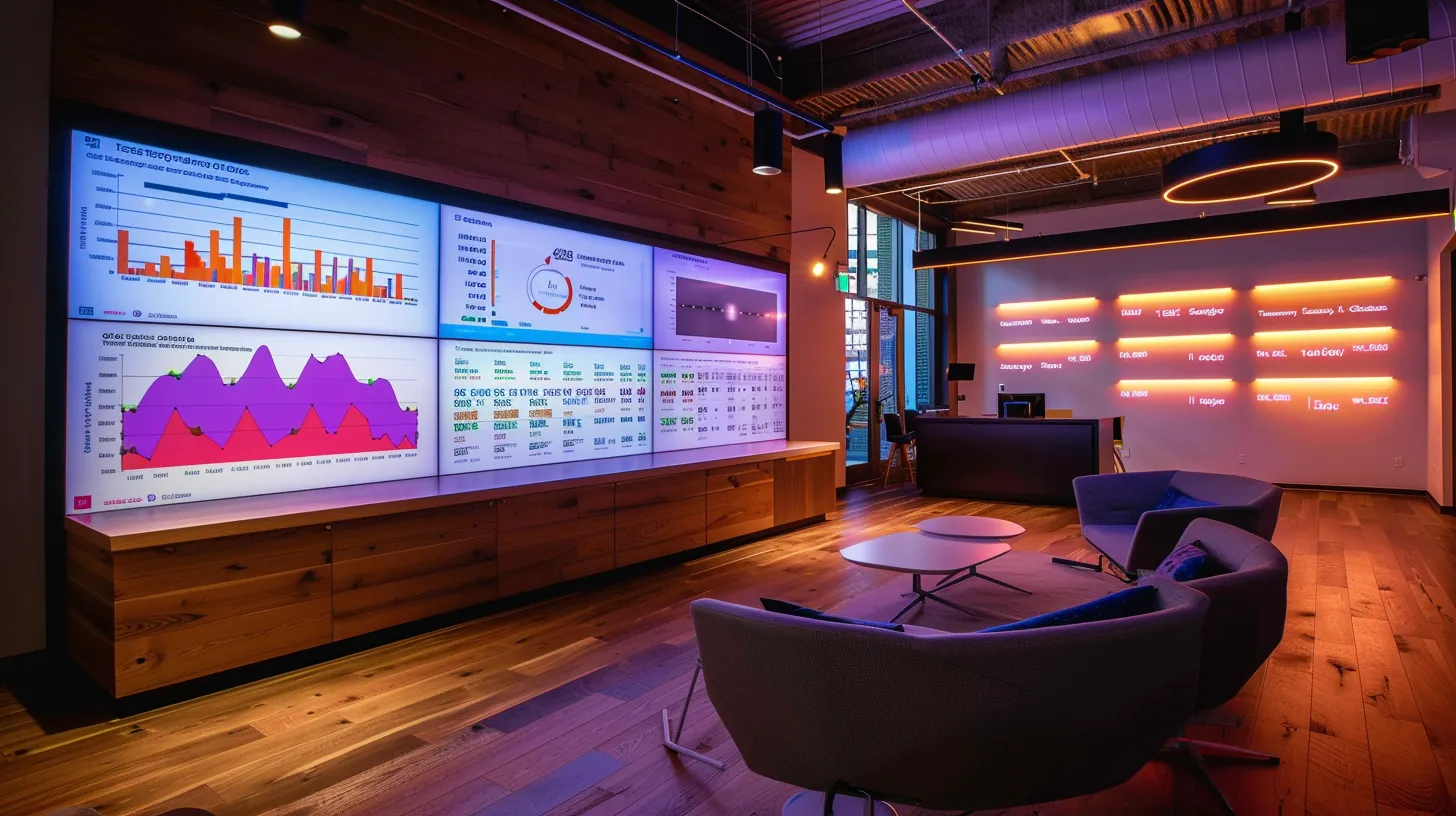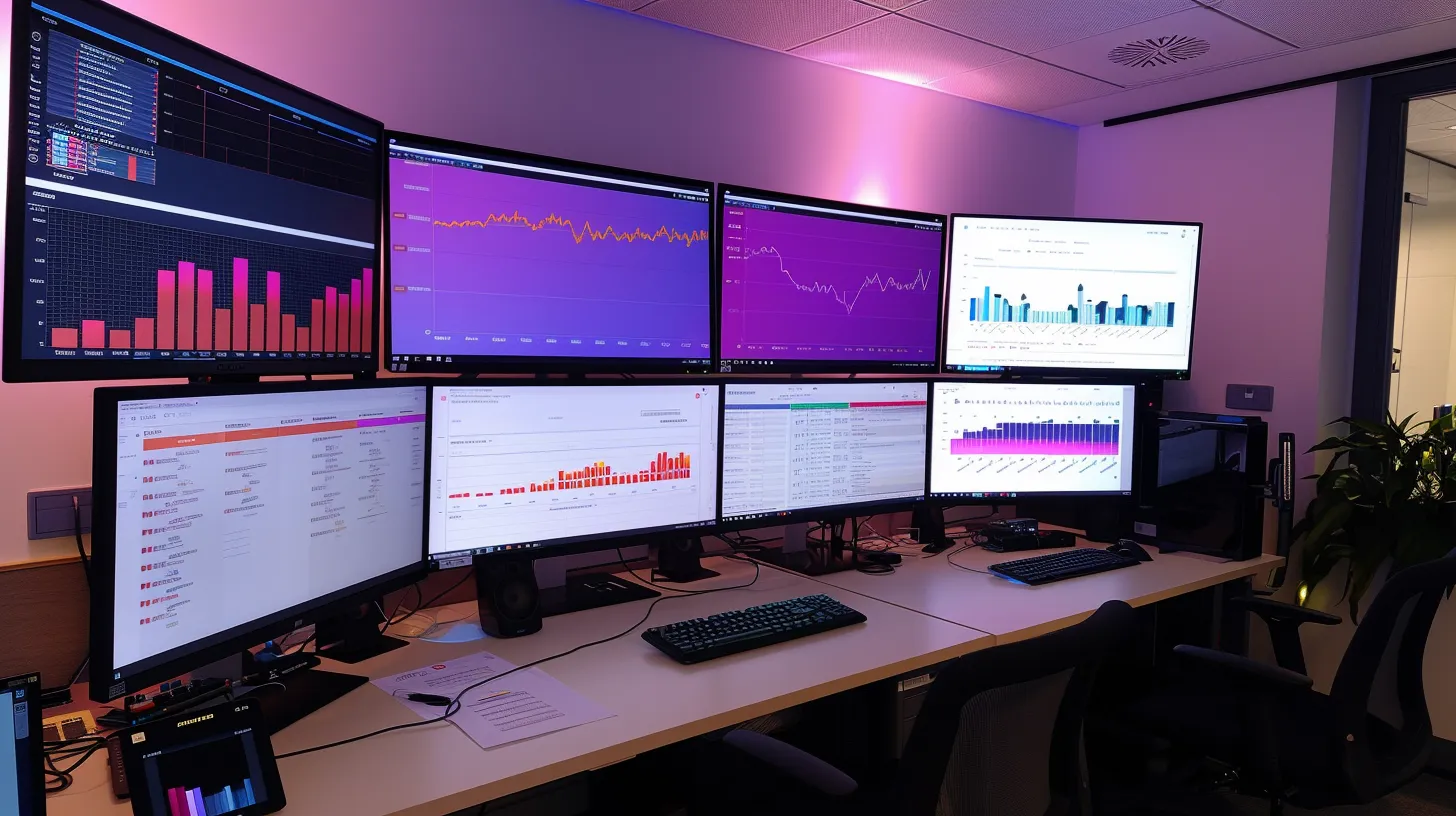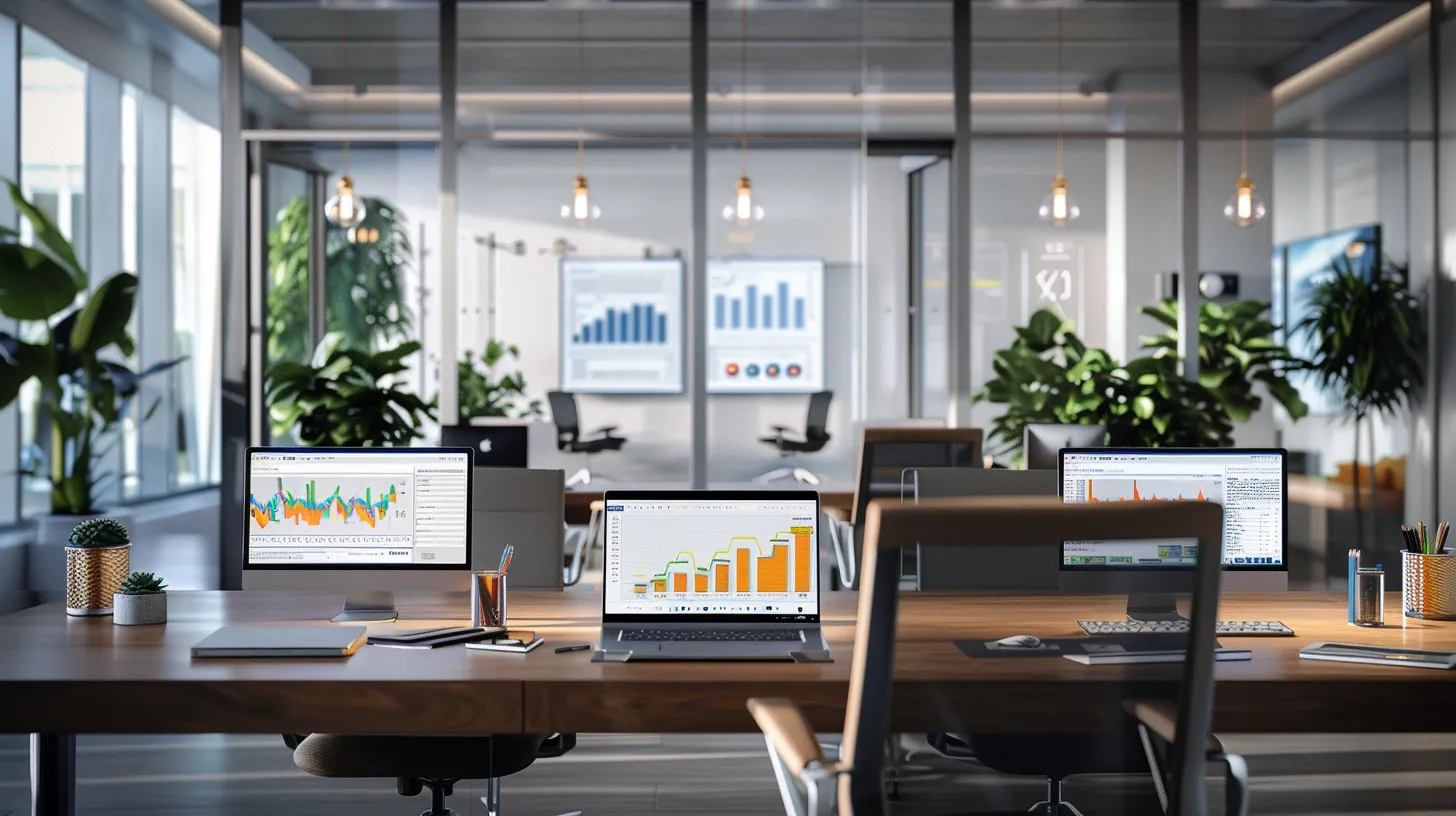Discover Proven on-page SEO strategies today
Are you struggling to improve your website’s search ranking? With 75% of users never scrolling past the first page of search results, effective on-page SEO strategies are crucial for visibility.
This article will cover foundational elements like keyword research, content refinement, and technical aspects that directly impact your site’s performance. By applying these strategies, you can enhance user engagement and increase your chances of ranking higher on search engines.
Let’s tackle the common challenges of on-page SEO and put your website on the path to success.
Key takeaways
- On-page optimization is crucial for improving website visibility in search engine results.
- User experience and site performance significantly influence search rankings and visitor engagement.
- Using structured data markup enhances content visibility and helps search engines understand context.
- Regular audits and updates ensure content remains relevant, boosting trust and reducing bounce rates.
- Effective keyword integration improves search performance and aligns content with user intent.
Grasping foundational on-Page SEO elements

Understanding on-page optimization is vital for enhancing your website’s visibility. I’ll talk about how search engines interpret page content and the importance of actions like using the “nofollow” attribute.
We’ll also evaluate how user experience influences search rankings and clarify the difference between on-page and off-page SEO activities, with a focus on integrating elements like data compression and essential HTML elements to improve performance.
Define on-Page optimization for your website
On-page optimization refers to the strategies and techniques employed directly within your website to enhance its visibility in organic search results.
This includes optimizing elements such as content, HTML tags, and images to ensure that they are aligned with search engine algorithms. A well-structured page helps search engines understand what the content is about, which ultimately contributes to improved rankings and visibility.
Understanding how to effectively use on-page elements like anchor texts can significantly impact user navigation and search engine evaluation.
By linking to relevant internal or external pages, you not only enhance the user experience but also provide context that search engines value. This approach can create a more favorable impression of your server’s content, leading to higher rankings in search results.
Incorporating a routine of competitor analysis into your on-page strategy can elevate your search engine optimization efforts.
By examining what keywords your competitors focus on and the elements they implement, you can identify gaps and opportunities in your own optimization strategy.
This insight allows you to refine your website’s on-page elements to better attract users and search engines alike, ensuring that your content remains relevant in the competitive digital space.
Understand how search engines read page content
Search engines utilize a structured approach to comprehend web page content, often relying on markup language to interpret the information presented.
Properly formatted content not only aids in clarity but also enhances a search engine’s ability to index and rank your pages. By using elements like header tags and meta descriptions, I ensure that search engines grasp key information quickly, which can lead to improved visibility in search results.
Link building plays a crucial role in how search engines evaluate page authority and relevance. When I create valuable internal and external links, I establish a network of connected information that search engines recognize as reliable and useful.
This practice not only assists in driving organic traffic but also reinforces the strengths of my content in the realm of content marketing.
Moreover, leveraging a content delivery network can boost site performance and influence how search engines interpret my web page.
By distributing content across various servers, I can enhance loading speed and user experience, which are critical factors in search rankings. A faster site ensures that visitors have a seamless experience, reducing bounce rates and increasing the likelihood of engagement with my content.
Link on-page actions to improved search positions
Linking on-page actions directly connects with improved search positions by enhancing the site’s semantics and ensuring a clear hierarchy of information.
By organizing content logically, I help search engines better understand user intent. This clarity not only guides search engines in indexing but also aids users in navigating my site efficiently.
Incorporating thoughtful navigation elements allows visitors to find what they seek quickly, fulfilling their user intent and reducing bounce rates. I ensure that internal links guide users through the content seamlessly, creating an intuitive experience that keeps them engaged.
Such a navigation-focused approach aligns with effective marketing strategies, as it encourages visitors to explore more of what my site has to offer.
Furthermore, I implement structured data markup, which presents a stronger hierarchy to search engines. This added layer of detail highlights critical information, facilitating better indexing capabilities.
As a result, my pages often achieve higher rankings, directly reflecting the effectiveness of combining on-page actions with strategic SEO practices:
Recognize user experience as an on-page signal
Recognizing user experience as a critical on-page signal is essential for maximizing your site’s effectiveness. As an expert in SEO, I’ve observed that a seamless interaction encourages visitors to stay longer and engage more deeply with content.
Implementing strategic elements such as fast loading times, intuitive navigation, and clear calls to action points users in the right direction, improving overall satisfaction and increasing the likelihood of conversions.
Utilizing analytics tools allows me to analyze user behavior on my website. By understanding how visitors arrive and navigate through my pages, I can identify areas for improvement.
Statistics reveal which content is most engaging, guiding my adjustments to align with user preferences, enhancing their experience while also boosting search engine rankings.
Incorporating social media marketing strategies can also enhance user experience on my site. By integrating shareable content and direct links to social platforms, I encourage interaction beyond the website itself.
This not only broadens my audience but also establishes a connection that contributes to continued engagement, furthering the visibility of my content and reinforcing its relevance in search algorithms.
Differentiate on-page from Off-Page SEO activities
When discussing SEO, it’s critical to distinguish between on-page and off-page activities. On-page optimization focuses on elements within your website, such as the structuring of page content, meta tags, and proper filename usage.
For instance, optimizing a filename to reflect relevant keywords can enhance visibility in search results and make it easier for search engines to index your pages effectively.
Conversely, off-page SEO refers to external factors influencing your website’s authority and ranking. This includes actions like building backlinks through guest posts or maintaining a presence on social media.
A common pitfall in off-page strategies is relying on link farms, which can harm your reputation with search engines, emphasizing the need for quality over quantity when creating external links.
Understanding the interplay between these strategies is essential for a comprehensive SEO approach. While on-page optimization lays the foundation for search engine visibility and user engagement, off-page activities build credibility and authority.
By continuously refining both aspects, I can enhance my site’s performance, ensuring that it stands out in competitive search results and meets user expectations seamlessly.
Now that we’ve covered the basics of on-page SEO, it’s time to focus on a key part: keywords. Understanding and applying keyword research will unlock deeper insights for your content and drive better results.
Applying keyword research for On-page gains

I pinpoint search terms that are relevant to my audience by determining the intent behind specific keywords. By assigning target keywords to website pages, I ensure that each page appears on the search engine results page as a helpful resource.
I also select tools for efficient keyword identification, allowing me to integrate keywords seamlessly into content, including headlines and snippets, enhancing overall visibility.
Pinpoint search terms relevant to your audience
To effectively grow your online presence, I focus on identifying search terms that resonate with my target audience. Understanding the language they use allows my content to appear relevant and accessible, enhancing our brand’s visibility and credibility in search results.
For example, if my domain name includes industry-specific terms, it helps align my pages with the searches my audience conducts.
Using keyword tools, I analyze phrases that potential customers frequently search for when looking for solutions in my field. This approach helps me collect high-traffic keywords while ensuring that they make sense in the context of my content.
By targeting these phrases, I can create pages that not only attract visitors but also establish my brand as a trustworthy source of information.
Incorporating these targeted search terms throughout my website is essential for optimizing on-page elements like headers and meta descriptions.
By doing so, I improve my website’s performance in search rankings while also answering my audience’s questions directly. This method supports a broader strategy to solidify my brand’s credibility and visibility in an increasingly competitive market:
- Identify phrases your audience uses.
- Use keyword tools for analysis and insight.
- Optimize on-page elements with targeted keywords.
Determine the intent driving specific keywords
Understanding the intent behind specific keywords is fundamental for optimizing on-page SEO. When I analyze what users input into search engines, I categorize their intents into various types, such as informational, navigational, and transactional.
This categorization helps me tailor content effectively, ensuring it meets the needs of those searching from a mobile device, as well as improving the overall usability of my website.
In my SEO strategy, I focus on creating meaningful descriptions that align with the intent identified. For instance, if users are searching for a product or service, I develop content that clearly outlines its benefits and features to attract their attention.
This approach not only helps improve rankings within the search algorithm but also engages visitors and guides them toward taking action on my site.
To enhance my keyword research process, I continually test and refine my methods. By examining user behavior and the performance of different keywords, I can identify which terms resonate most effectively with my audience.
My ongoing analysis allows me to adjust descriptions and optimize content in real-time, leading to higher visibility and engagement rates:
- Identify keyword intents: informational, navigational, and transactional.
- Create relevant content that aligns with user intent.
- Refine keyword strategies through ongoing analysis and testing.
Assign target keywords to website pages
Assigning target keywords to specific pages on your website is fundamental for maximizing their visibility within search engine results. I focus on integrating relevant keywords that resonate with user behavior, ensuring each page serves a defined purpose.
For example, if a page is about SEO strategies, using terms like “on-page optimization” enhances its relevance and helps search engines better understand its context.
Another crucial aspect is maintaining an appropriate keyword density. This ensures that keywords appear naturally throughout the content without overwhelming the reader.
I also make it a practice to utilize hyphens in URLs for keyword separation, which aids search engines in parsing the content effectively and enhances user experience by providing clean and clear web addresses.
It’s essential to incorporate alt attributes for images related to the content, allowing search engines to interpret the image context, thereby contributing to overall SEO.
This strategy not only improves visibility but also enhances user experience, as descriptive alt text can assist visually impaired users. By combining these techniques, I create a comprehensive approach to assigning target keywords across pages, leading to higher engagement and improved search rankings:
Select tools for efficient keyword identification
Selecting the right tools for efficient keyword identification is a fundamental step in enhancing my content creation efforts. I often rely on platforms like Google Keyword Planner and SEMrush to uncover search terms that align with my target audience’s interests.
These tools not only provide insights into search volume but also suggest related keywords that I can strategically integrate into my content.
Utilizing tools that offer competitive analysis allows me to gauge how my website stacks up against others in my niche. For instance, I examine competitors’ rankings to identify opportunities for local search optimization.
By understanding which keywords are driving their traffic, I can refine my strategy to boost my own PageRank effectively.
Additionally, integrating keyword research tools with CSS for web design aids in optimizing vital on-page elements like meta descriptions and headers.
Understanding lazy loading techniques also plays a role, as these can improve my site’s performance while ensuring that my content is properly indexed. Together, these strategies streamline my content process, enhance user experience, and ultimately contribute to better search engine visibility.
Integrate keywords sensibly into content
Integrating keywords sensibly into my content requires a strategic approach that enhances both visibility and user experience. In digital marketing, keyword placement matters – using primary keywords naturally within the first 100 words of my content can signal to search engines the relevance of my page.
For instance, when I write about affiliate marketing, I avoid unnatural phrases, instead weaving in keywords like “affiliate marketing strategies” seamlessly throughout the text. This practice not only helps improve search rankings but also maintains the readability of the content.
Another important aspect is keyword density. I aim for a balanced keyword density to ensure my content feels valuable and engaging rather than forced.
By using related terms and synonyms, I enrich my writing while adhering to optimal density levels. For example, discussing web performance alongside keywords about speed and efficiency can create a comprehensive resource that appeals to both search engines and readers seeking solutions.
To illustrate my point effectively, I often use lists to break down complex information. This technique not only improves readability but also allows readers to quickly grasp key points, enhancing their overall experience. By providing actionable insights within these lists, I guide readers towards understanding how strategic keyword integration contributes to better web performance and visibility:
- Use primary keywords naturally within the content.
- Aim for balanced keyword density to enhance readability.
- Incorporate related terms to enrich the text.
- Utilize lists to present information clearly and concisely.
- Focus on actionable insights to engage your audience.
Keyword research sets the stage, but effective content is where the real battle lies. Let’s sharpen those elements to boost your visibility and draw in the right audience.
Refining content components for search visibility
I focus on refining key content components for improved search visibility. Writing compelling title tags encourages clicks, while well-developed meta descriptions draw visitors effectively.
Organizing my content logically with header tags makes it accessible. I also place keywords appropriately within page text and add descriptive alt text to images. These strategies are essential in audits and keyword research, positioning my site favorably in the competitive landscape.
Crafting title tags that engage users is a crucial step in improving search visibility. I focus on writing concise and relevant tags that not only capture the essence of the page content but also resonate with what users are searching for.
Effective title tags often include actionable language and key terms, enhancing their likelihood of being clicked on when displayed on search engine results pages.
In my experience, it’s essential to avoid duplicate content in title tags across different pages. Each title should reflect the specific content of that page, ensuring clarity and relevance.
Incorporating keywords related to the content helps search engines and users understand what they can expect when they click, whether it’s an article or a product image, like a jpeg, to grab attention.
Moreover, I ensure that my title tags are accessible to all users, including those utilizing screen readers. This involves placing vital information first within the title tag to maximize clarity.
By focusing on relevance and practicality, I create an engaging entry point that encourages users to explore further and boosts my page’s performance in search rankings:
Develop meta descriptions to draw visitors
Crafting compelling meta descriptions is crucial for attracting visitors to my site. I aim to create concise summaries that encapsulate the key points of the page, all while incorporating relevant keywords.
For instance, if I have a page on “on-page SEO strategies,” I might use a meta description like, “Learn practical on-page SEO strategies to boost your website’s visibility and drive organic traffic.”
In my experience, a well-structured meta description acts as a call to action that encourages users to click. An effective description not only summarizes the content but also engages curiosity.
I often use actionable phrases like “discover,” “learn,” or “find out” to prompt the audience to interact with my content. Keeping within 150-160 characters ensures that the entire description appears on search engine results, maximizing its impact.
Additionally, I recognize the importance of testing different meta descriptions to identify which resonates best with my audience. By tracking click-through rates and adjusting the wording based on performance, I can refine my strategy.
The key is to develop descriptions that align with user intent and provide a clear understanding of what they can expect from the page:
- Create concise and informative summaries that include relevant keywords.
- Use actionable phrases to engage readers and encourage clicks.
- Test and adjust meta descriptions based on performance metrics.
Organizing content logically with header tags is critical for enhancing both user experience and search engine optimization. I prioritize using header tags (H1, H2, H3) to structure my articles, allowing readers to easily navigate through the material.
For instance, I use an H1 for the main title and H2s for sections, ensuring that each subsection is clearly defined and helps convey the overall message effectively.
Header tags not only improve readability but also play a role in SEO by signaling the hierarchy and importance of information on the page. When I implement descriptive headers, I include relevant keywords, making it easier for search engines to understand the content’s focus.
This method ensures that my pages conform to best practices, making it simpler for users to find specific information they seek.
Moreover, I often remind clients that a well-organized layout keeps visitors on the page longer, decreasing bounce rates and improving engagement.
Clear headings serve as guideposts, allowing readers to skim through the content and locate sections of interest rapidly. This approach benefits both user satisfaction and overall site performance in search results, leading to enhanced visibility and better ranking outcomes:
- Use H1 for main title, H2 for sections, and H3 for subsections.
- Include relevant keywords in header tags for better SEO.
- Maintain clarity to support user navigation and reduce bounce rates.
Place keywords appropriately within page text
Placing keywords appropriately within the text is essential for improving search visibility. As I develop content, I strive to include primary keywords early in the introduction, ideally within the first 100 words.
This practice signals to search engines the relevance of my page to specific queries, enhancing its likelihood of ranking higher for those terms.
In my experience, maintaining a natural flow is vital when integrating keywords throughout the body of the text. Instead of forcing keywords into sentences, I focus on writing engaging content that naturally incorporates these terms.
For instance, when discussing effective on-page SEO strategies, I’ll use phrases like “on-page optimization” and “keyword placement” while ensuring the sentences remain coherent and valuable to the reader.
Furthermore, it’s crucial to consider keyword density to prevent keyword stuffing, which can harm readability and user experience. I keep my content engaging by using synonyms and related terms, enriching the discussion around the primary keywords.
This approach not only supports my SEO goals but also addresses the needs of my audience, providing them relevant information they seek.
Add descriptive Alt text to images
Adding descriptive alt text to images is a crucial on-page SEO strategy that I prioritize in my optimization efforts. This text helps search engines understand the context of images, which can significantly improve visibility in search results.
For example, instead of using a generic label like “image1.jpg”, I employ alt text that describes the image content clearly, such as “a professional SEO consultant analyzing website performance”.
From my experience, including relevant keywords in the alt text can enhance its effectiveness. However, it’s essential to strike a balance; the description should be concise and directly related to the image without appearing forced.
By ensuring that my alt text adds value, I help users who rely on screen readers while also optimizing my site for search engines.
Investing time in writing thoughtful alt text not only supports SEO objectives but also creates a more inclusive experience for all users. I find that well-crafted descriptions can lead to higher user engagement, as visitors are better informed about what they are viewing.
This practice aligns with my overall goal of refining content components to boost search visibility and enhance user satisfaction on my website.
Content is only part of the journey. Next, we will focus on how to engage readers with effective on-page methods that keep them coming back.
Boosting user interaction with on-page methods

To boost user interaction, I emphasize structuring content for better readability, utilizing internal links to guide both users and search engines, and ensuring optimal mobile performance. Additionally, decreasing page loading speed is essential for user satisfaction.
Creating engaging and shareable content pieces further enhances interaction, leading to a more vibrant user experience that aligns seamlessly with effective on-page SEO strategies.
Structure content for better readability
Structuring content for better readability is a fundamental aspect of effective on-page SEO. I prioritize using short paragraphs and clear subheadings to break up text, making it easier for readers to digest information.
This method mirrors how users typically scan web pages, allowing them to locate relevant details quickly and efficiently, thereby enhancing their overall experience.
Using bullet points and numbered lists provides an organized way to present key information, making it visually appealing while retaining clarity.
I find that incorporating concise sentences helps maintain engagement, as lengthy passages can overwhelm visitors and lead to higher bounce rates. I aim to create a seamless flow of information that keeps readers on my page longer.
Additionally, I focus on employing active voice throughout my content, which adds energy and encourages reader interaction. By addressing potential questions or concerns directly, I can foster a connection with my audience.
This practice not only aids in comprehension but also positions me as a knowledgeable resource, ultimately driving better engagement and interaction with the site.
Use internal links to guide users and bots
Internal links play a vital role in enhancing user experience and search engine navigation on my website. By strategically placing these links within my content, I guide users to related articles or pages, allowing them to find more information effortlessly.
For example, if I discuss an SEO technique, I might link to a detailed guide on that specific strategy, providing immediate access to further insights that meet the reader’s curiosity.
Moreover, internal links help search engines better understand the structure and context of my website. When I use descriptive anchor text for these links, it clarifies the relevance of the destination page, making it easier for search engines to index it.
The clearer my internal linking strategy, the more likely I am to improve the overall search visibility of my content.
Ultimately, creating a robust internal linking framework not only enhances the flow of information but also encourages longer sessions on my website. When users can navigate seamlessly from one relevant topic to another, it increases their satisfaction and reduces bounce rates.
This comprehensive approach aligns with my goal to provide valuable content that retains visitors’ attention, supporting both user engagement and search engine performance effectively.
Ensure your website works well on mobile devices
Ensuring your website functions effectively on mobile devices is crucial in today’s digital landscape. With more users accessing the internet via smartphones and tablets, I prioritize a mobile-first design approach.
This means that I optimize the layout and content to provide an engaging experience regardless of screen size, enhancing usability and accessibility for all visitors.
I regularly implement responsive design techniques to adapt my website’s appearance and functionality on various devices.
For example, using flexible grid layouts and scalable images guarantees that elements adjust smoothly, which prevents distortion and ensures a seamless browsing experience. This approach not only supports better user interaction but also positively influences my SEO rankings as search engines favor mobile-friendly sites.
Finally, I emphasize fast loading speeds for mobile users to reduce bounce rates and keep visitors engaged. I achieve this by optimizing images and minimizing unnecessary scripts that can slow down performance.
By streamlining my website, I create a more enjoyable user experience, encouraging visitors to explore my content further and ultimately leading to higher conversion rates.
Decrease page loading speed for users
One of the most critical factors for improving user interaction is decreasing page loading speed. I have found that websites that load quickly not only keep visitors engaged but also enhance the overall user experience.
It’s essential to focus on optimizing images, minimizing JavaScript, and leveraging browser caching to ensure that pages load smoothly and efficiently.
In my experience, utilizing tools like Google PageSpeed Insights allows me to diagnose areas where my site may lag. By following the recommendations provided, I can implement changes, such as compressing images and enabling text compression, which directly impact loading times.
This practice leads to lower bounce rates, as users are less likely to leave a site that loads promptly.
It’s also vital to test loading speed on multiple devices, including smartphones and tablets, to ensure consistency. With a responsive design, I can offer an engaging experience across all platforms.
The faster my site performs, the more likely visitors are to interact with my content and ultimately convert into clients. Here are some actionable strategies to decrease page loading speed:
- Optimize images to reduce file size without losing quality.
- Minimize CSS and JavaScript to improve load times.
- Leverage browser caching to store frequently accessed resources.
- Use a content delivery network (CDN) to distribute content more efficiently.
Creating engaging and shareable content is essential for enhancing user interaction on my site. I focus on crafting content that resonates with my audience’s interests and needs, ensuring it is informative and easy to digest.
For instance, by incorporating relevant visuals, such as infographics or videos, I can make complex topics more accessible while keeping visitors engaged.
To encourage sharing, I integrate social sharing buttons prominently within my content. This simple addition allows readers to share valuable insights effortlessly across various platforms.
I’ve noticed that when I offer practical tips or solutions that address common pain points, users are more inclined to share that information with their networks, thereby increasing my content’s reach.
Another effective strategy I utilize is storytelling to connect with my audience emotionally. By sharing relatable experiences or case studies, I create a narrative that resonates with readers, making the information more memorable.
This approach not only enhances engagement but also encourages readers to discuss and share my content, further boosting interaction and visibility in search results.
User interaction is vital for any website’s success. But as we improve these connections, we must also look closely at the technical side of on-page SEO to ensure everything runs smoothly.
Addressing technical aspects of on-Page SEO

I concentrate on several essential technical aspects to enhance on-page SEO. Constructing clear and logical URL addresses allows my content to be easily understood by both users and search engines.
Implementing schema markup improves search listings, while identifying and repairing broken internal links ensures a smooth user experience.
Furthermore, I confirm that search engines can crawl and index my pages effectively, and I set up canonical tags to prevent issues with duplicate content.
Construct clear and logical URL addresses
Constructing clear and logical URL addresses is essential for enhancing both user experience and search engine optimization.
I focus on creating URLs that reflect the content of the page, ensuring they are descriptive and easy to understand.
For example, instead of using complex strings of characters, I opt for a straightforward format like “www.example.com/on-page-seo-strategies,” which helps both visitors and search engines quickly grasp the topic at hand.
I also prioritize keeping URL structures short and free of unnecessary parameters. This approach not only improves readability but also aids in indexing by search engines, ultimately contributing to better visibility in search results.
When I maintain a clean URL structure, it makes it easier for users to remember and share my links, further enhancing engagement and traffic to my site.
Finally, I ensure that my URLs incorporate relevant keywords whenever appropriate. Including target keywords in URLs signals to search engines what the page is about, boosting its chances of ranking higher.
By following these best practices, I create a more user-friendly experience while aligning with effective strategies to optimize my website’s performance in search results.
Utilize schema markup for Enhanced search listings
Utilizing schema markup is a powerful strategy to enhance search listings and improve visibility on search engines. This structured data provides search engines with specific information about the content on my pages, allowing them to present more informative results in search.
When I implement schema properly, it can lead to rich snippets—such as star ratings, product prices, or upcoming event details—that attract user attention and can result in higher click-through rates.
In my projects, I often apply schema markup to various types of content, including articles, products, and services. For instance, when I optimize a product page, I include schema that highlights key features, availability, and reviews.
This enriched data not only helps search engines understand the relevance of my content but also enhances user experience by displaying pertinent information directly in the search results, making it easier for potential customers to find exactly what they are looking for.
Moreover, keeping up with the latest schema updates and best practices ensures that I maximize the benefits of this tool. I regularly check resources like Schema.org to identify new types of schema that may be relevant to my content.
By consistently applying and updating schema markup on my website, I position my content to achieve better indexing, which can significantly contribute to improved search rankings and user engagement.
Find and repair Broken internal links
Finding and repairing broken internal links is crucial for maintaining a healthy website and improving user experience.
I routinely conduct audits to identify these links, as broken URLs can frustrate visitors and lead to higher bounce rates. By systematically checking and fixing these issues, I ensure that all parts of my website remain accessible and functional.
When I locate broken links, I take immediate action to either replace them with updated URLs or remove them altogether if they are no longer relevant.
This practice not only enhances the navigation experience for users but also helps search engines effectively index my pages. Keeping the internal linking structure intact supports the overall SEO health of my site.
To streamline this process, I recommend using professional tools that can automate the detection of broken links. These tools provide comprehensive reports, making it easier for me to prioritize and address issues quickly:
- Regularly audit your site for broken links.
- Update or remove broken URLs to improve navigation.
- Utilize tools to automate link checks and enhance efficiency.
Confirm search engines can crawl and index pages
Confirming that search engines can crawl and index my web pages is fundamental for ensuring that my content reaches a wider audience. I often use tools like Google Search Console to check if my pages are being indexed correctly.
This process allows me to identify any indexing issues, such as blocked resources or incorrect directives in the robots.txt file, which can impact visibility in search results.
It’s crucial to ensure that my website’s structure is friendly to search engine bots. I implement a clear sitemap that outlines the layout of my website and submit it through search platforms for faster indexing.
Additionally, I regularly check for any crawl errors and fix them promptly, ensuring that all critical pages remain accessible to search engines.
Maintaining a strong link structure also boosts my site’s crawlability. By strategically incorporating internal links, I guide search engines to navigate easily through my site’s content. This not only facilitates better indexing but helps in distributing page authority effectively, which enhances overall search performance:
- Utilize Google Search Console for indexing checks.
- Create and submit an XML sitemap.
- Fix crawl errors quickly for optimal accessibility.
- Enhance internal linking to improve navigation for search engines.
Setting up canonical tags is essential for preventing duplicate content issues on my website. When multiple pages have similar or identical content, search engines may struggle to determine which version to rank.
By implementing canonical tags, I specify the preferred version of a page, helping search engines understand the original source and ensuring that my SEO efforts are not diluted by duplicate content.
For example, if I have a product page accessible through different URLs, I use canonical tags to point to the main URL. This practice not only streamlines search engine indexing but also consolidates the ranking signals to a single page.
As a result, my site can achieve higher visibility in search results, which is crucial for attracting organic traffic.
Regularly reviewing and updating canonical tags for new content is just as important. I pay attention to the pages I create, ensuring that each one has appropriate canonical tags where needed.
This proactive approach takes care of potential issues before they arise, allowing me to maintain a clean and efficient site structure, ultimately improving my overall on-page SEO strategy:
The right technical setup can lead to success, but it doesn’t end there. Next, we’ll look at how to track and sharpen your on-page SEO, ensuring your efforts lead to real results.
Tracking and improving on-Page SEO performance

To effectively enhance on-page SEO performance, I focus on several key areas. I start by checking keyword rank changes and website traffic to measure impacts. Studying user behavior data provides valuable insights into what engages visitors.
Using SEO audit software, I perform thorough on-page analysis, ensuring content remains current and accurate. Finally, I adapt my strategy based on results, fostering continuous improvement.
Check keyword rank changes and website traffic
Monitoring keyword rank changes and website traffic provides essential insight that helps me evaluate the effectiveness of my on-page SEO strategies.
By using tools like Google Analytics or SEMrush, I regularly check how specific keywords perform over time and analyze any fluctuations in traffic volumes.
This data allows me to identify trends that inform what content resonates best with my audience, ensuring my focus remains on strategies that yield positive results.
In my experience, I find that understanding these metrics helps me refine my approach to on-page optimization continually.
For example, if I notice a drop in ranking for a particular keyword, I can investigate landing page elements like title tags, meta descriptions, or content relevance, making necessary adjustments to improve visibility.
Likewise, a sudden increase in traffic to a specific page can prompt me to expand on that content or enhance internal linking strategies to capitalize on the interest.
Tracking keyword performance and website traffic isn’t just about numbers; it’s a process that reveals user behavior and preferences.
Analyzing these trends helps me create content that meets my audience’s needs effectively, fostering higher engagement levels. By keeping an eye on these essential metrics, I position my website to adapt and thrive in search engine rankings, ultimately delivering value to both my users and my SEO endeavors:
Study user behavior data for insights
Studying user behavior data is a key practice for enhancing on-page SEO performance. By using tools like Google Analytics, I can track how visitors interact with my website, including which pages they engage with most and the time they spend on each page.
This information is invaluable, as it helps me identify content that resonates with users and content that may need improvement.
Analyzing metrics such as bounce rates and session durations provides insights into user preferences and experiences.
For instance, if I notice a high bounce rate on specific pages, it may indicate that the content isn’t meeting visitors’ expectations or that the page isn’t easy to navigate.
I can then make strategic adjustments to enhance the user experience, such as improving content clarity or optimizing internal links to encourage further exploration.
Using heatmaps and click-tracking tools complements my analysis of user behavior data. These visual representations show where users are clicking and how they navigate through my site.
Armed with this information, I can refine my on-page layout and call-to-action placements to align better with user interests and needs:
Employ SEO Audit software for on-Page analysis
Employing SEO audit software is a key step in my on-page analysis, as it helps identify critical areas for improvement on my website.
These tools systematically evaluate elements such as meta tags, header structures, and content formats, enabling me to pinpoint issues that might be affecting my search engine rankings.
By leveraging these insights, I can optimize each aspect to better align with best practices in on-page SEO.
One practical application of SEO audit software involves generating comprehensive reports that highlight discrepancies in keyword usage or content relevance.
For instance, if the tool flags multiple pages lacking proper meta descriptions, I can promptly address this issue to improve visibility. Regularly utilizing these audits allows me to stay proactive and responsive to changes in search engine algorithms and audience preferences.
To enhance your understanding, I find it beneficial to review the information provided by these tools periodically. They often present actionable recommendations that can guide my optimization efforts effectively, ensuring I remain competitive in search results.
The insights gained from conducting routine SEO audits contribute significantly to my overall strategy, fostering continuous improvement and a better user experience:
Keep content current and accurate
Keeping content current and accurate is essential for maintaining high search engine rankings and ensuring user trust.
I regularly review and update my website’s articles to reflect the latest information and trends in SEO strategies. For instance, if I notice a shift in search engine algorithms, I make timely revisions to my content, ensuring it remains relevant and effective for my audience.
In my experience, outdated content can lead to increased bounce rates, as visitors expect the latest insights and are quick to leave if they find irrelevant or incorrect information.
I monitor engagement metrics closely to identify which pages may require updates, allowing me to take action before user interest dwindles. This not only enhances user satisfaction but also signals to search engines that my site is a reliable source of up-to-date information.
Additionally, I seek feedback from users and analyze search performance to pinpoint content areas that need improvement or expansion.
This proactive approach not only helps me maintain accuracy but also allows me to align my content better with user intent.
By ensuring my resources are always current and precise, I can create a positive experience that fosters ongoing engagement and encourages return visits to my site.
Adapt your on-Page strategy based on results
Adapting my on-page strategy based on results is a crucial part of my SEO process. When I analyze performance data, I pay close attention to which keywords drive traffic and how users interact with my content.
For example, if I notice a drop in traffic for a specific keyword, I can investigate and make adjustments, whether in content quality, keyword placement, or internal linking, to better align with user intent.
I utilize various analytics tools to gain insights into user behavior and traffic patterns. By examining metrics such as bounce rates and time on page, I can identify areas needing improvement.
If I see that a page has a high bounce rate, I take the opportunity to enhance the content, refine the layout, or improve navigation, ultimately guiding users to explore more of what my site offers.
Furthermore, consistent monitoring allows me to stay agile and responsive to changes in search engine algorithms and user preferences.
I regularly refine my strategy based on the latest data, ensuring my content remains relevant and valuable. This proactive approach not only helps maintain high search rankings but also ensures that my audience receives the best possible experience while engaging with my website.
Conclusion
Implementing effective on-page SEO strategies is crucial for improving your website’s visibility and enhancing user experience.
By optimizing elements such as title tags, meta descriptions, and content structure, you can attract more visitors and boost engagement. Regularly analyzing keyword performance and user behavior ensures that your strategies remain relevant and effective.
Embrace these actionable insights today to drive tangible results and elevate your online presence in search engine rankings.




